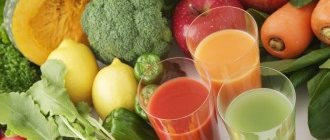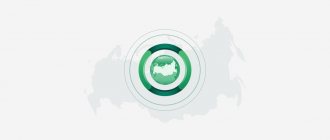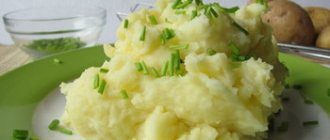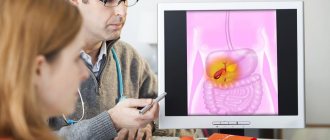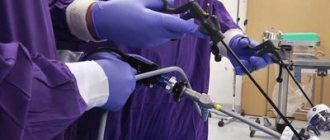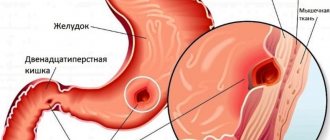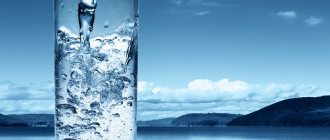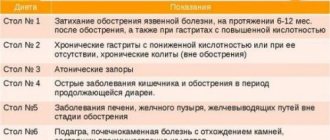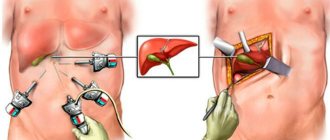There is nothing superfluous in the human body: each organ has its own purpose. If, in order to save the life and health of a patient, doctors have to remove an organ, it does not go unnoticed: the patient inevitably has to make adjustments to his lifestyle.
All this fully applies to the consequences of cholecystectomy. Removing the gallbladder increases the load on the liver. In such a situation, she needs to be helped to function normally, in particular, to improve bile secretion. Therefore, diet becomes one of the most important components of a patient’s rehabilitation program after surgery.
We are talking about diet No. 5, which gastroenterologists recommend for most diseases of the gastrointestinal tract.
How does the body work after cholecystectomy?
Removal of the gallbladder is carried out according to strict indications, when its function is greatly reduced or has stopped altogether. Sometimes a person lives without suspecting that this organ is gradually removed from the digestive process:
- does not collect or store bile;
- does not concentrate it;
- does not throw it out at the time of active digestion, that is, it does not fulfill its main task.
This means that the patient’s body has already adapted to new conditions. The same thing happens after laparoscopic surgery to remove the bladder. Bile continues to be produced, but there is no reservoir for it. And the restructuring of biochemical reactions and some processes in the digestive system begins.
The functions of the “storage” of bile are taken over by the ducts. But their volume is small; they cannot store large amounts of bile. Therefore, meals should be fractional and portions small. Gradually, the ducts will increase in size until they can accommodate the amount of digestive fluid needed by the body.
All unpleasant sensations after surgery are associated with the fact that bile, regardless of food intake, enters the duodenum, since the sphincter that blocks its access to the intestine is temporarily “switched off” and remains in a “shock” state. Gradually his work is improving, and postoperative syndromes are disappearing.
The main task during the rehabilitation period is to use diet to help your body make the adjustment shorter and less painful. What can you eat after gallbladder removal?
[media=
https://youtu.be/P8ZDMezif4U
]
Greens after gallbladder removal surgery
Parsley and dill, which are familiar and loved by most people, are mandatory products in diet No. 5. There are no contraindications to their use after cholecystectomy.
Traditional medicine has long used fresh dill as a means to cleanse the liver and gallbladder of sand, waste, toxins and even small gallstones. After removal of the bladder, this herb is recommended as an excellent means of preventing stone formation in the bile duct(s).
Parsley has an excellent antioxidant effect and also helps improve the digestion process in general.
What can you eat for the first 45 days?
After laparoscopy
the patient receives general nutritional advice.
Strict adherence to the diet is prescribed for the entire first year after surgery, until the restructuring in the body is completed.
Even after gentle laparoscopic surgery, the patient remains in intensive care for 24 hours.
At this time, eating is excluded, you can only drink a small amount of water. Over the next month and a half, the diet changes day by day:
| Period | Recommendations | Rules for eating |
| Second day after surgery |
|
|
| 3 – 5 days |
|
|
| Day 6 and 7 |
| The diet remains the same. |
If the recovery period is favorable, on the 8th day the patient is transferred to a special diet - table No. 5. Diet numbers can vary - 5A, 5B, 5Sh, 5P, depending on the presence of concomitant pathology or complications that have arisen.
From the eighth day to one and a half months, nutrition remains as gentle as possible. Meat dishes should be served only in the form of minced meat - meatballs, meatballs, steamed cutlets. Soups should be pureed. Puddings, soufflés, casseroles are recommended. Slimy porridges (oatmeal), jelly and non-acidic juices are useful.
Which fruits are allowed and which are not allowed after gallbladder removal?
Fruits familiar to Russians contain a lot of useful substances and vitamins, but after cholecystectomy their consumption also requires compliance with certain rules. To answer the question “after gallbladder surgery, what fruits can you eat?” you need to know the following.
Firstly, sour fruits should be removed from the diet, as they have a negative effect on the intestines. Secondly, their consumption in raw form is possible only after consultation with a nutritionist or attending physician. And thirdly, fruit juice based on them should only be freshly squeezed. You can’t drink canned or packaged stuff.
Can be used:
- Apples. Only sweet varieties and preferably baked. The iron they contain helps the body recover faster after bladder resection. You can also use them in the form of soufflés and compotes. It is better to dilute juices with water in proportions of one to one. Raw apples can be eaten no earlier than two weeks after discharge from the hospital, and only with the permission of the attending physician.
- Pears. Very useful for the pancreas, the load on which increases significantly in the absence of bile. They should also be consumed baked first, and then switched to raw, but in moderation.
- Plum and cherry plum. For gallstone disease, these fruits are contraindicated, although they contain useful antioxidants. After cholecystectomy, they can be eaten no earlier than three months after discharge, observing moderation and caution.
- Peaches and apricots. Very useful not only for the liver, but also for the pancreas. The first two weeks they can be eaten in the form of jelly, compotes, jellies and mousses, and then they can be eaten raw.
Read also: How does therapeutic fasting help with gallstones?
Any permitted fruit must be peeled before consumption, which is difficult to digest.
Inna Lavrenko
auto RU
If we talk about exotic fruits, then in theory they also contain a lot of useful substances, but long transportation implies the use of preservatives, which are harmful to the body weakened by the operation. For example, the ripening of exotic fruits is accelerated with the help of ethylene, a fungicide is used to protect against premature rotting, and biphenyl is used to preserve and improve the presentation. In this regard, such fruits should be consumed very carefully, purchasing them only from trusted suppliers.
Features of consuming exotic fruits after gallbladder resection:
| № | Helpful information |
| 1 | Bananas. Very healthy and nutritious. They are allowed to be eaten even in the presence of inflammation of the bile ducts. After the operation, they can be eaten starting from the third or fourth day and immediately raw. But it should be remembered that they can increase gas formation and cause bloating, so it is better to limit yourself to one banana per day |
| 2 | Citrus fruits (grapefruit, lemon, tangerine, orange). Alas, they all have high acidity, so you will have to forget about them for at least three months. And after that it is better to limit their use as much as possible. |
| 3 | Pomegranate. Contraindicated for the same reason as citrus fruits (too much acid) |
| 4 | Persimmon. Alas, it is also not recommended and even prohibited. Despite its sweet taste, this fruit has an astringent effect, which is contraindicated after such an operation. Only after three months can you try introducing persimmon mousse or jelly into your diet, but it’s better to give it up completely |
| 5 | A pineapple. Its sweetness is also only a mask for its acidic contents, so it should not be eaten after cholecystectomy |
Simply put, after a patient has had his gallbladder removed, the only exotic fruits he can eat are bananas, and then only in limited quantities.
Products prohibited for 1.5 months
For one and a half months after gallbladder removal, you should not eat the following foods:
- fresh vegetables and fruits;
- fresh bread white bread;
- rye bread of any age;
- crumbly porridge;
- easily digestible carbohydrates (sweets, honey, sugar).
The last limitation is related to the prevention of bile stagnation.
Fatty, salty, spicy, smoked dishes are certainly prohibited, and not only during this period, but also in the subsequent menu throughout the year.
Food must be thoroughly chopped; it should not be cold or too hot.
Additional recommendations for organizing the patient’s nutrition
You must strictly follow all the nutritionist’s recommendations.
Doctors recommend including predominantly liquid foods in the diet: compotes, jelly, pureed soups, semi-liquid porridges with water and milk are well digestible, taste good, and such nutrition will be as gentle as possible for the body. At the same time, all dishes served must be at room temperature: drinking too hot or too cold drinks is not recommended.
At night, you can drink a glass of yogurt or kefir, and if you wake up in the middle of the night, diluted juice or warm, weak tea will be useful. It is better for the patient to limit his sugar intake: sweet desserts can be replaced with fruit, this is not only healthy, but also very tasty. To make the diet more comfortable, it is advisable to diversify the diet as much as possible: the diet menu includes several options for each dish. In the summer, you can eat more fresh salads; greens can be seasoned with low-fat sour cream or vegetable oil. All products must be of the highest quality; any failure can cause serious digestive upset.
A reasonable approach to diet will minimize the negative consequences of gallbladder removal. Fractional nutrition will prevent stagnation of bile in the ducts, this will prevent the formation of stones, stretching of the ducts and other unpleasant complications. This will allow the patient to regain good health, in addition, diseases of the digestive system will not progress. Giving up several types of foods is worth the result achieved; medical recommendations will allow you to forget about abdominal pain and other negative symptoms. A healthy lifestyle ensures rapid recovery of the body and longevity.
Preventing complications
With the help of nutrition, you can prevent some complications and restore impaired functions. If the reason for cholecystectomy was the presence of stones in the bladder, complications such as duodenitis, dyskinesia, cholangitis, and sphincter of Oddi insufficiency may develop.
In order to correct the condition, all foods that contribute to increased bile secretion are removed from the diet:
- any fats, including vegetable fats;
- coarse fiber;
- onion, garlic, radish;
- fatty meat and fish;
- soups with meat, fish and mushrooms.
It is also necessary to reduce or eliminate salt
and
drink less fluid
. Products harmful to the pancreas are excluded - everything that is rich in fiber, contains uric acid and extractives (offal, some types of fish, seafood).
Diet No. 5
After two months, you can switch to diet No. 5. It provides more complete nutrition, activates compensatory mechanisms, stimulates enzymatic, protein-synthesizing processes in the liver, excretion of bile, and has a beneficial effect on the functions of those organs and systems that are often involved in the pathological process during chronic lesions of the hepatobiliary system. The calorie content of the daily diet increases by 700-900 kilocalories - due to fats (80-100 grams), carbohydrates (about 400), the amount of free liquid - up to two liters.
Now it is already allowed to eat dried rye bread or yesterday’s baked bread; vegetarian or with secondary broth (no more than 3-4 times a week) soups from prefabricated vegetables, borscht, cabbage soup from fresh cabbage, pickle soup from vegetables and fresh cucumbers, beetroot soup, pearl barley soup, potato with meatballs.
For the main course you can cook beef stroganoff, meatballs, pilaf from boiled meat, potato casserole with boiled meat, cabbage rolls stuffed with meat and rice, boiled meat stewed with mixed vegetables, meat pies, rice pilaf with fruit, puddings from rice and vegetables, rice and cottage cheese, homemade noodles with meat, chopped pasta with raisins, pasta with tomato and cheese, dumplings with cottage cheese, cheesecakes with cottage cheese, cottage cheese baked with sour cream, cottage cheese soufflé with apples. Allowed are mild varieties of cheese, a little fresh sour cream and cream, jam, honey, ripe fruits and non-acidic berries in raw and baked form, apple, strawberry and milk mousses, oranges, tangerines, grapes, plums, strawberries, raspberries, currants, strawberries .
Drinks include tea with lemon, fruit juices - cherry, apricot, orange, tangerine, and vegetables.
Add butter, olive, sunflower, and corn oil to dishes in their natural form.
But it happens that a patient’s condition worsens, even if he strictly follows a diet. The body temperature rises, the stool becomes light-colored, greasy, sticks to the toilet, and occasional vomiting occurs with a copious admixture of bile. After vomiting, relief usually occurs, pain in the right hypochondrium decreases, and nausea disappears. Such phenomena indicate a violation of the outflow of bile from the common bile duct into the duodenum and, ultimately, stagnation of bile.
Prohibited and permitted products after cholecystectomy
There are not many dietary restrictions. they concern food that is not very healthy even for a healthy body.
| Types of products and dishes | Allowed | Prohibited |
| Flour products |
|
|
| Fermented milk | Any with a low fat percentage. |
|
| Meat, offal |
|
|
| Fish | Any cod species. |
|
| First meal |
|
|
| Eggs | Only in the form of omelettes (no more than 2 eggs per week). | Soft-boiled eggs, fresh. |
| Porridge |
| Porridges from any legumes |
| Vegetables |
Very limited - tomatoes and cucumbers. |
|
| Fruits | Any | |
| Fats | Only vegetable ones, preferably olive oil. | Butter. |
| Sausages and fast food products | Only boiled sausages | All smoked meats, any semi-finished products and fast food. |
| Beverages |
|
|
All pickled, salted and canned foods are prohibited. You can only drink homemade compotes prepared for the winter, diluting them with water.
[media=
https://youtu.be/xM9CCaQ9Jqw
]
Prohibited
- Cold (from the refrigerator) foods and drinks (even if recommended in the diet);
- Fried foods;
- Dishes where bouillon cubes are added;
- Spicy dishes. Spicy snacks, canned food, smoked sausage, red caviar.;
- Fatty meats (pork, lamb), fatty poultry (goose, duck);
- All fried foods, canned meat of ordinary preparation;
- Liver, kidneys, brains;
- Sturgeon, stellate sturgeon, beluga, salmon, catfish and other types of fatty fish;
- Salted smoked products (balyk);
- Conventional canned food;
- Chum salmon caviar;
- Yolks and whole egg dishes;
- Pork, beef, and lamb fat;
- Ghee, lard;
- Sharp cheeses, feta cheese, full-fat cottage cheese, cream, full-fat milk;
- Meat and fish broths and any soups based on meat and fish broths;
- Roasting vegetables for soups;
- Excessively fatty soups, green cabbage soup made from nettle, spinach, sorrel;
- Sauces based on meat and fish broths with toasted flour; horseradish, mustard, pepper, garlic;
- Freshly baked and rich bread;
- Compact flour dishes: pancakes, pancakes, donuts, pies, kulebyaki, etc.;
- Butter dough;
- Pastries, cream pies, fatty cookies;
- Any fried: Sorrel, spinach, asparagus, legumes, tomatoes, tomato, radish, radish;
- All citrus fruits, grapes, pineapples;
- Cold drinks, iced drinks;
- Carbonated drinks, champagne, beer, spirits;
Diet
Let us describe the diet regimen that is most rational for the rehabilitation process after removal of the gallbladder.
Monday
- cottage cheese: up to 0.15 kg;
- porridge (rice + milk) up to 0.15 kg.
- crackers: 0.05 kg;
- bran, a glass of compote (1 glass).
- soup (oatmeal + egg): up to 0.15 l. (grind the egg);
- steamed cutlets (turkey or chicken): 0.1 kg.
Grape jelly: up to 0.15 kg.
- fish meatball: 0.1 kg. + mashed potatoes (potatoes) (up to 0.15 kg);
- pudding (cottage cheese): 0.12 kg.
Tuesday
- buckwheat porridge: 0.15 kg;
- steamed omelette.
Cottage cheese: 0.1 kg. (low-fat).
- boiled meat (beef or turkey): up to 0.15 kg;
- boiled rice: 0.1 kg. (a little butter, just for taste);
- vegetable soup: up to 0.15 l;
- rosehip decoction.
- boiled beets: up to 0.15 kg. (you can have beet salad);
- a glass of apple compote.
- steamed fish: up to 130 g;
- carrot puree: up to 0.15 kg.
Wednesday
- low-fat cheese: up to 0.1 kg. (hard grade only);
- oatmeal (oils for taste only).
- baked apples: Up to 0.2 kg;
- sandwich with low-fat cheese.
- milk rice porridge: up to 0.15 l;
- dried fruit compote (mainly prunes): 0.12 l;
- chicken meatballs: up to 0.15 kg;
- zucchini puree: up to 0.15 kg.
- crackers - 0.1 kg;
- biscuits - 0.05 kg;
- one glass of jelly.
- steamed lean fish - 0.15 kg;
- stewed cauliflower - 0.2 kg.
Thursday
- rice porridge with milk - 0.1 kg;
- meatballs: up to 0.13 kg.
- baked pears with cottage cheese - 0.15 kg;
- sandwich with low-fat cheese.
- vegetable soup - 120 ml;
- beef meatballs: 120 g;
- boiled vegetables - up to 0.15 kg.
- crackers 60 g;
- jam with breadcrumbs - 0.15 kg.
- baked cod - 0.15 kg;
- boiled carrots - 0.1 kg;
- tea (1 glass).
Friday
- wheat porridge - 0.15 kg;
- meat puree - 0.12.
- yogurt - 0.14 kg (low-fat);
- tomatoes - 0.12 kg.
- vegetable puree soup - 0.15 kg;
- baked cauliflower 0.15 kg.
- marmalade with breadcrumbs - 0.12 kg;
- a glass of pear compote.
- pumpkin puree up to 0.16 kg;
- fish cutlet - 0.1 kg.
Saturday
- corn porridge - 0.15 kg;
- meat pate - 0.15 kg.
- bran: 1-2 tablespoons;
- cucumbers - 0.1 kg.
- vegetable rice soup - 0.15 l;
- apple compote (1 cup).
Cheesecakes with sour cream - 0.12 kg.
- boiled fish - 0.1 kg;
- mashed potatoes - 0.15 kg.
Sunday
- barley porridge - 0.15 kg;
- cottage cheese casserole - 0.15 kg.
- pickle - 150 ml;
- pasta - 100 g;
- beef stroganoff (beef) without seasoning - 0.15 kg;
- lingonberry compote (1 glass).
- a glass of fresh juice;
- crackers - 0.05 kg;
- pudding (rice) - 0.12 kg.
- cabbage rolls - 0.2 kg;
- baked pumpkin - 0.15 kg.
